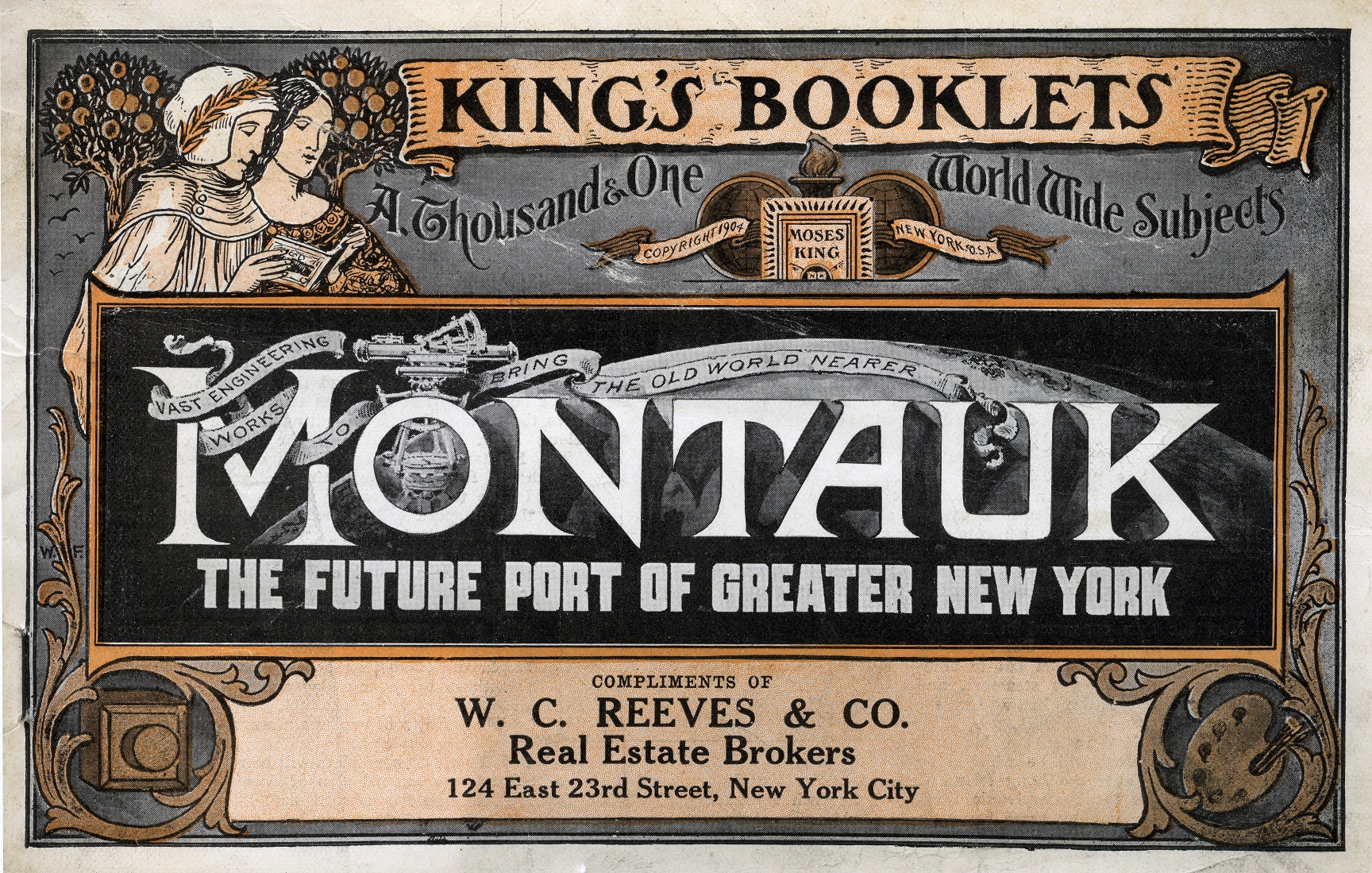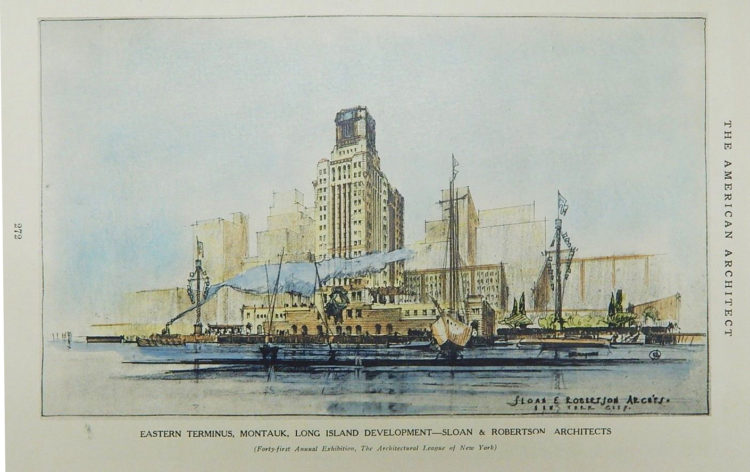Montauk Never Became a Transatlantic Port

A number of people tried to make Montauk into a transatlantic port in the late nineteenth and early twentieth centuries. On paper, the idea made sense: docking ships at Fort Pond Bay and then putting goods on the Long Island Rail Road would cut a day off the typical New York-Great Britain voyage. But didn’t pan out.
In 1879, Arthur Benson bought most of Montauk for $151,000, paying only 10% down. (This deal is still being disputed today by the descendants of the Montaukett Indians.) Benson was a friend of Austin Corbin, the owner of the Long Island Rail Road, who planned to extend the railroad out to Montauk, and therefore Benson knew the land would become much more valuable. Once the railroad was extended, Corbin could turn Montauk into a deep water port; this would also cut down on overcrowding in the Port of New York. In 1894, a bill was introduced to Congress that would create a deep water port in Montauk. The next year, the Benson heirs sold 4000 acres of Montauk to Corbin and partner Charles Pratt for $200,000. The first LIRR train pulled into Montauk later that year. In 1896, a steel pier 400 feet long was built for steamers.

So what happened? Corbin died in 1896, which put a crimp in his plans. Also, Corbin didn’t figure out that Fort Pond Bay is too shallow and rocky to handle ships that size and could not be dredged. Other attempts were made to make Montauk into a transatlantic port over the years, including by Carl Fisher in the 1920s; all failed.
Images: the first picture is a pamphlet published 1904; the second is from the American Architect magazine, 1926.



